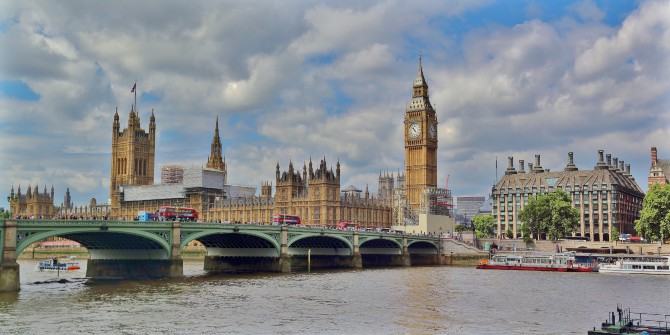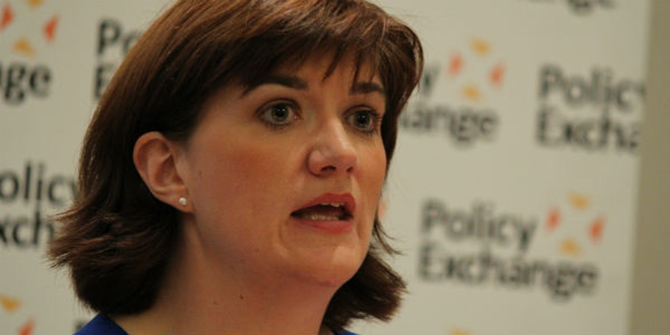 Christopher Massey compares the left’s walkout of the Labour Party’s National Executive Committee meeting in November 2020 with the last time such a substantial walkout occurred in March 1986. Whilst the actions of the ‘hard’ left in 1986 rendered the meeting inquorate and stopped disciplinary action being taken against a Militant member, the virtual walkout of the left caucus in 2020 had no such impact.
Christopher Massey compares the left’s walkout of the Labour Party’s National Executive Committee meeting in November 2020 with the last time such a substantial walkout occurred in March 1986. Whilst the actions of the ‘hard’ left in 1986 rendered the meeting inquorate and stopped disciplinary action being taken against a Militant member, the virtual walkout of the left caucus in 2020 had no such impact.
On 24 November 2020, the ‘left caucus’ of the Labour Party’s National Executive Committee (NEC) staged a digital walkout in protest at the actions of Keir Starmer’s leadership. The left’s move laid bare the factionalism within Labour’s most important decision-making body. However, the walkout of the 13 members made no impact on the conclusions reached by the Committee which continued to make decisions after the left caucus had exited the Zoom session.
The last time a major walkout took place at Labour’s NEC occurred in 1986 during the Committee’s investigation into the Militant Tendency in Liverpool and had a much greater impact on events. The NEC meeting on 26 March 1986 was scheduled to hear the first case of a Militant member, Felicity Dowling, charged with breaking Labour Party rules. In protest at the decision to hold such expulsion hearings, seven members of the ‘hard’ left: Tony Benn, Eric Clarke, Frances Curran, Eric Heffer, Joan Maynard, Jo Richardson and Dennis Skinner, walked out of the NEC meeting room in protest. Peter Taaffe and Tony Mulhearn described the left’s walkout as ‘the most open public and visible split in the NEC ever seen.’
The left’s action in March 1986 had a far greater impact than the 2020 walkout as the walkout of the seven members rendered the NEC’s meeting inquorate. The High Court had previously ruled that an additional eight Committee members, who took part in an official NEC Inquiry in Liverpool between December 1985 and January 1986, were ineligible to sit at the expulsion hearings. This meant that following the left’s exit from the meeting on 26 March 1986, only 14 members of the 29-member Committee remained. Consequently, as the party’s Standing Orders set the quorum of the NEC at 15 members, in an embarrassment to the party leader, Neil Kinnock, the hearing against Dowling had to be halted.
In April 1986, the quorum of the NEC was quickly altered to be 50% of eligible members during a vote at which the eight Inquiry members were eligible to participate in. The change to the NEC’s standing orders passed by 22 votes to 2. From this point, the left staged no further walkouts. Despite the opposition of the left, between May and October 1986, nine Liverpool members were expelled on charges of either being members of Militant and/or breaking Labour’s constitutional rules. Due to these controversies, in 1987 Labour’s National Constitutional Committee was created.
Long-term, the actions of the hard-left in 1986, through both their walkout and refusal to back disciplinary action against members of the Militant Tendency, pushed the soft-left of the Committee: Tom Sawyer, David Blunkett, Eddie Haigh and Michael Meacher into an alliance with the party’s leader, Neil Kinnock. The realignment of Labour’s left in 1986 gave Kinnock a stable majority on the NEC for the rest of his tenure.
Unlike the events of March 1986, the walkout of the 13 self-branded ‘left caucus’ members in November 2020 did not impact on the decisions reached by the NEC. In total, 25 members of the 39-strong body remained in the meeting (Richard Leonard, the Scottish Labour representative was absent) with 24 ultimately voting for Margaret Beckett as Chair with one abstention.
The left’s 2020 walkout ‘to expose factionalism at the top of Labour’, merely exposed the left’s reduced strength following the November NEC elections. Whilst the left was successful in securing five of the nine constituency representative places, they remain in a minority overall as shown through the walkout of only 13 members on 24 November. Even if the Momentum-backed disabled members’ representative, Ellen Morrison, and the left-wing Leonard are added to this number the left still can claim a maximum of 15 places at the NEC. With 24 votes swinging behind Margaret Beckett, this might imply that Starmer has a very comfortable majority. However, the real swing votes of the NEC sit within the 4-6 member soft-left – particularly the GMB seats and Open Labour members such as Ann Black.
During the vote for Beckett for NEC chair, the leadership, ‘right’ trade unions and the soft-left coalesced to form a substantial majority. However, long-term it remains to be seen just how reliable the soft-left votes will be for Starmer. Yet, on the evidence of the unanimous vote for Beckett on 24 November 2020, he is still likely to find a majority on most issues. In 1986, the left’s walkout over action expulsion against the Militant Tendency pushed the soft-left into a closer alliance with the leadership. Keir Starmer and his supporters will be hoping that the left’s walkout in November 2020 leads to a similar realignment of the party’s top Committee in order to push forward his ‘new leadership.’
_____________________
 Christopher Massey is a Senior Lecturer in History and Politics at Teesside University.
Christopher Massey is a Senior Lecturer in History and Politics at Teesside University.







